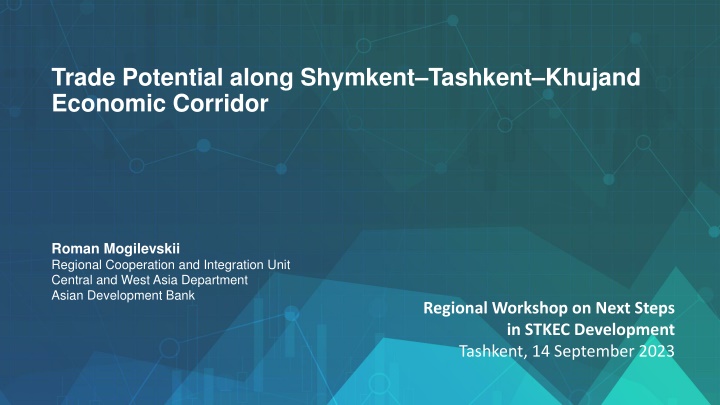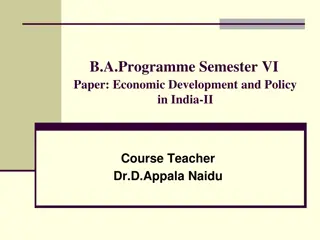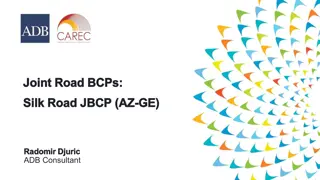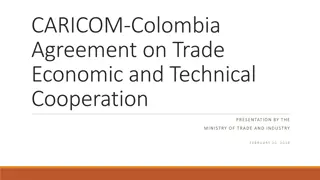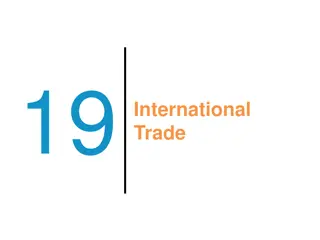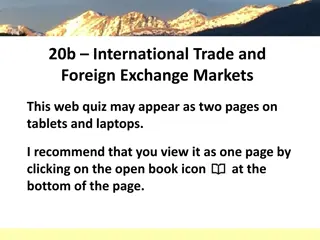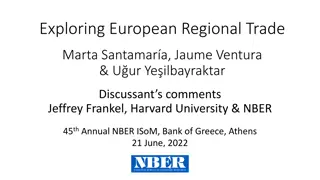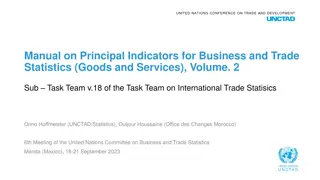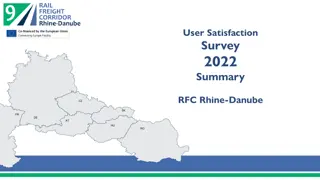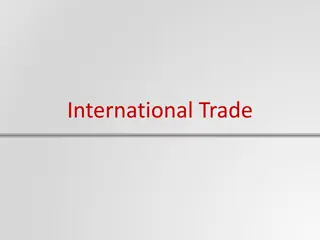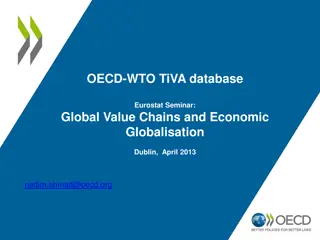Enhancing Trade Potential along Shymkent-Tashkent-Khujand Economic Corridor
Explore the trade potential along the Shymkent-Tashkent-Khujand Economic Corridor, focusing on recent shocks, trends in trade between STKEC economies, composition of trade, and barriers to trade development. Discover how Kazakhstan, Tajikistan, and Uzbekistan are enhancing their economic cooperation and integration. Learn about the challenges and opportunities for advancing regional trade along the corridor.
Download Presentation

Please find below an Image/Link to download the presentation.
The content on the website is provided AS IS for your information and personal use only. It may not be sold, licensed, or shared on other websites without obtaining consent from the author.If you encounter any issues during the download, it is possible that the publisher has removed the file from their server.
You are allowed to download the files provided on this website for personal or commercial use, subject to the condition that they are used lawfully. All files are the property of their respective owners.
The content on the website is provided AS IS for your information and personal use only. It may not be sold, licensed, or shared on other websites without obtaining consent from the author.
E N D
Presentation Transcript
Trade Potential along ShymkentTashkentKhujand Economic Corridor Roman Mogilevskii Regional Cooperation and Integration Unit Central and West Asia Department Asian Development Bank Regional Workshop on Next Steps in STKEC Development Tashkent, 14 September 2023 INTERNAL. This information is accessible to ADB Management and staff. It may be shared outside ADB with appropriate permission.
Recent Shocks and Policy Changes COVID-19 pandemic in 2020-2022 and post-pandemic recovery Increased frequency and severity of climate-related shocks, e.g., the 2021 drought in Central Asia Regime change in Afghanistan in 2021 The ongoing Russian invasion of Ukraine and its spillovers onto Central Asian economies Full accession of Uzbekistan to CIS FTA in 2021 INTERNAL. This information is accessible to ADB Management and staff. It may be shared outside ADB with appropriate permission.
Trends in Trade between STKEC Economies For 2018-2022, trade between Kazakhstan, Tajikistan and Uzbekistan increased by 72% For the same period, their trade with the world increased by 47% Actual trade grows faster than optimistic projections made in 2020 Turnover of trade between STKEC economies 10 000 9 000 8 000 7 000 Million USD 6 000 5 000 4 000 3 000 2 000 1 000 0 2018 2022 2025 2030 Actual Projections INTERNAL. This information is accessible to ADB Management and staff. It may be shared outside ADB with appropriate permission.
Composition of Trade along the Corridor All three STKEC economies mostly export primary goods (crude oil, metals, ores and other raw materials) and import goods for final use (machinery, equipment, consumer goods etc.) However, their trade with each other is more complex and advanced Tourism and other trade in services (e.g., construction) Industrial cooperation, STKEC vs. World 50% 49% 40% 32% 28% 27% 30% 22% 20% 10% 9% 7% 6% 10% 5% 5% 2% 0% World STKEC World STKEC World STKEC Kazakhstan Tajikistan Uzbekistan Exports of processed goods for final use, % of total exports Imports of primary goods for industrial use, % of total imports INTERNAL. This information is accessible to ADB Management and staff. It may be shared outside ADB with appropriate permission.
Barriers to Trade and Trade Development Agenda in STKEC Transport and border-crossing infrastructure, but also infrastructure for quality assurance Imperfect business processes and governance issues Trade diversion effects of regional agreements (e.g., EAEU) Structural issues (asymmetrical trade flows, lacking economies of scale and market structures, lack of skilled personnel etc.) High financing costs Provision of regional public goods as key for trade development along STKEC (trade facilitation, joint labs, training centers etc.) INTERNAL. This information is accessible to ADB Management and staff. It may be shared outside ADB with appropriate permission.
Additional details: ADB. 2021. Assessing the Potential of Trade along the Proposed Shymkent Tashkent Khujand Economic Corridor, https://www.adb.org/sites/default/files/publication/662076/potential- trade-shymkent-tashkent-khujand-corridor.pdf. Thank you! INTERNAL. This information is accessible to ADB Management and staff. It may be shared outside ADB with appropriate permission.
